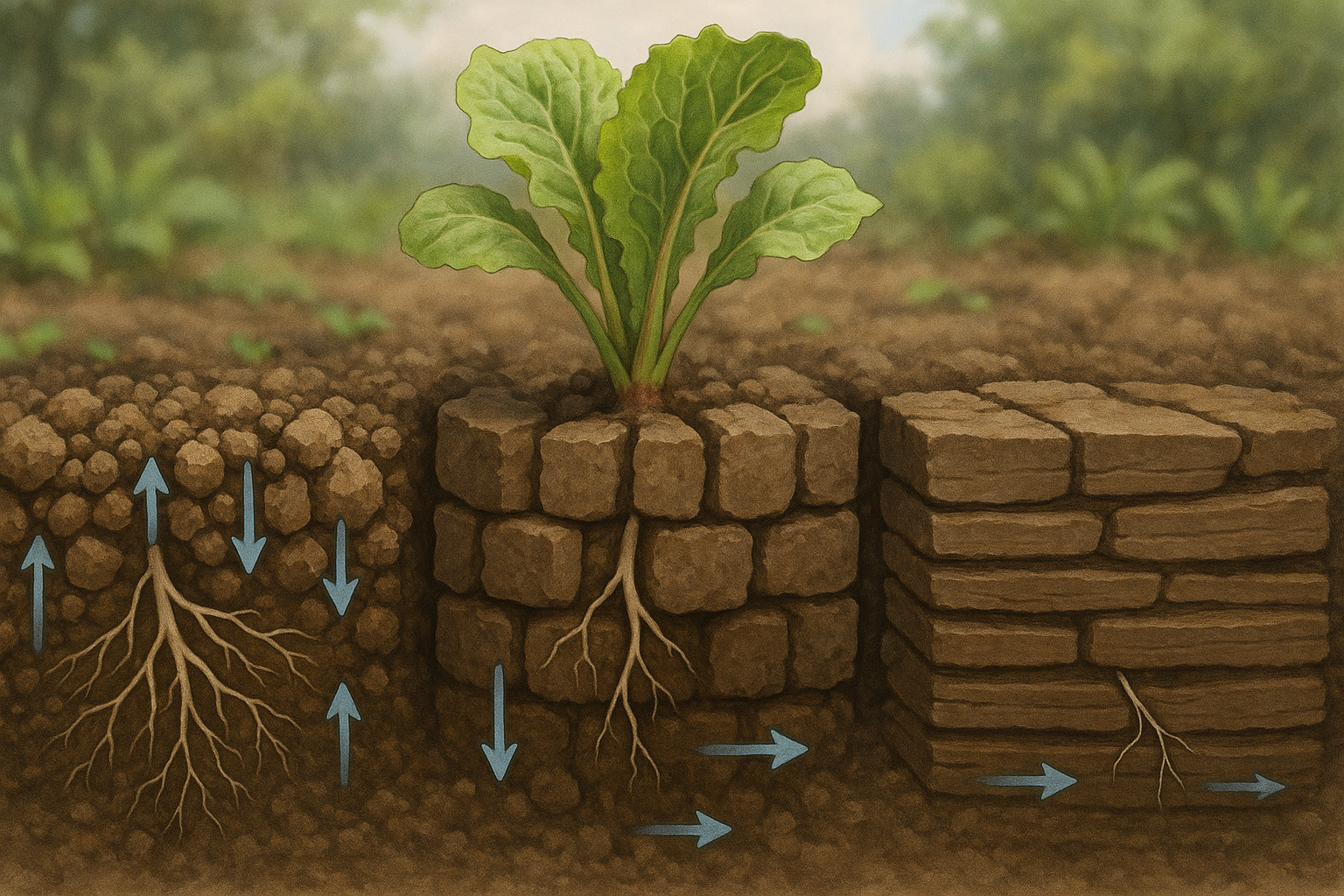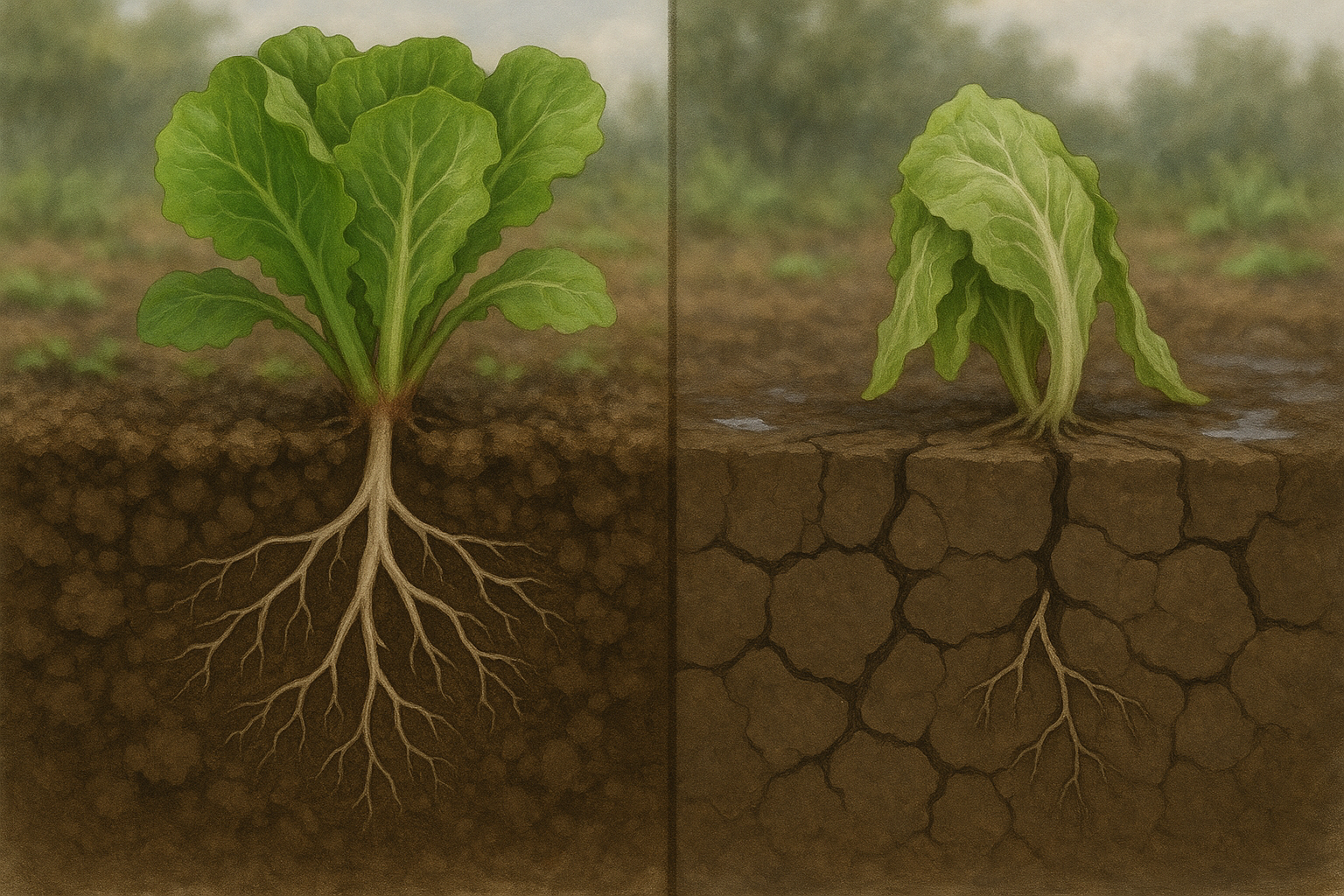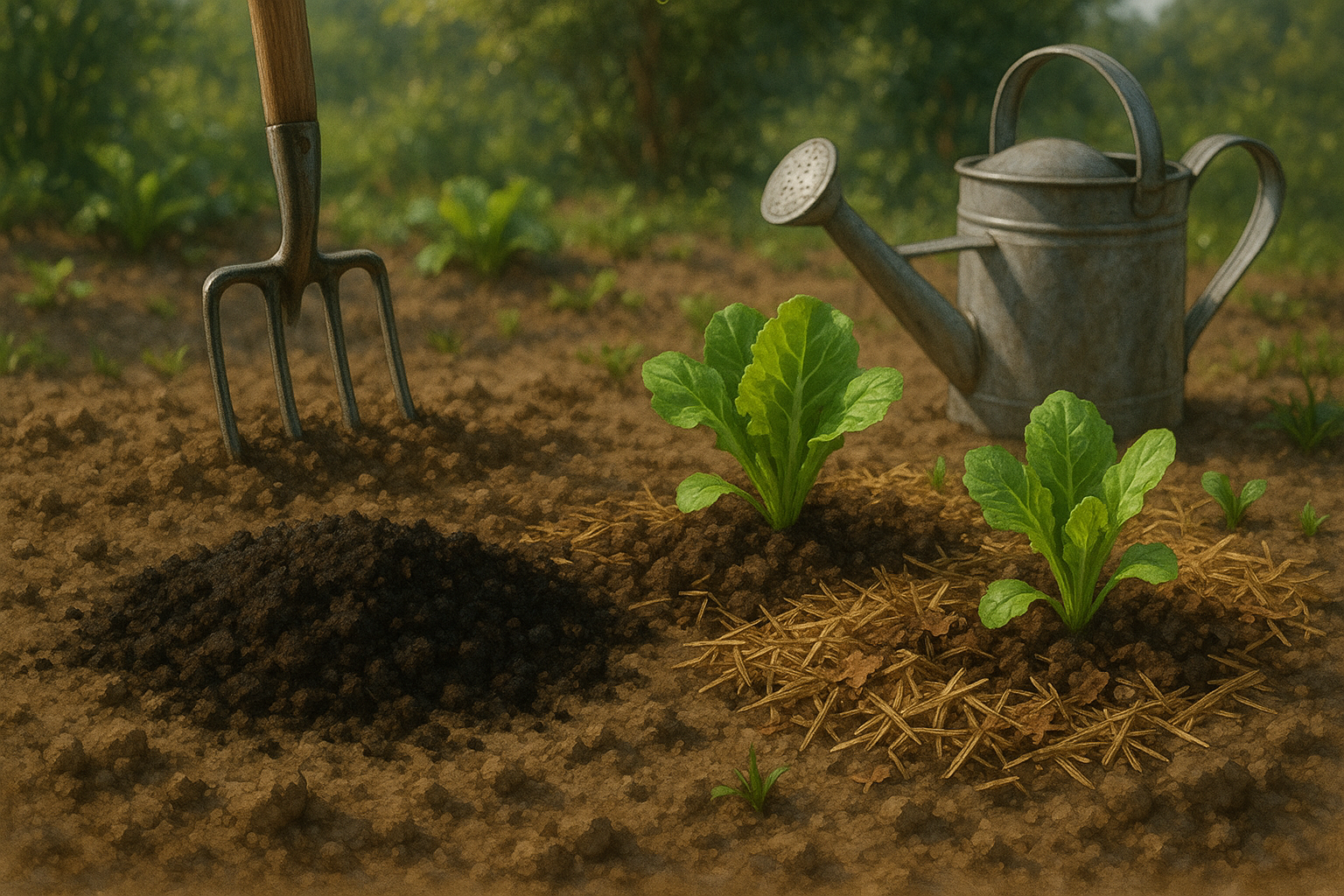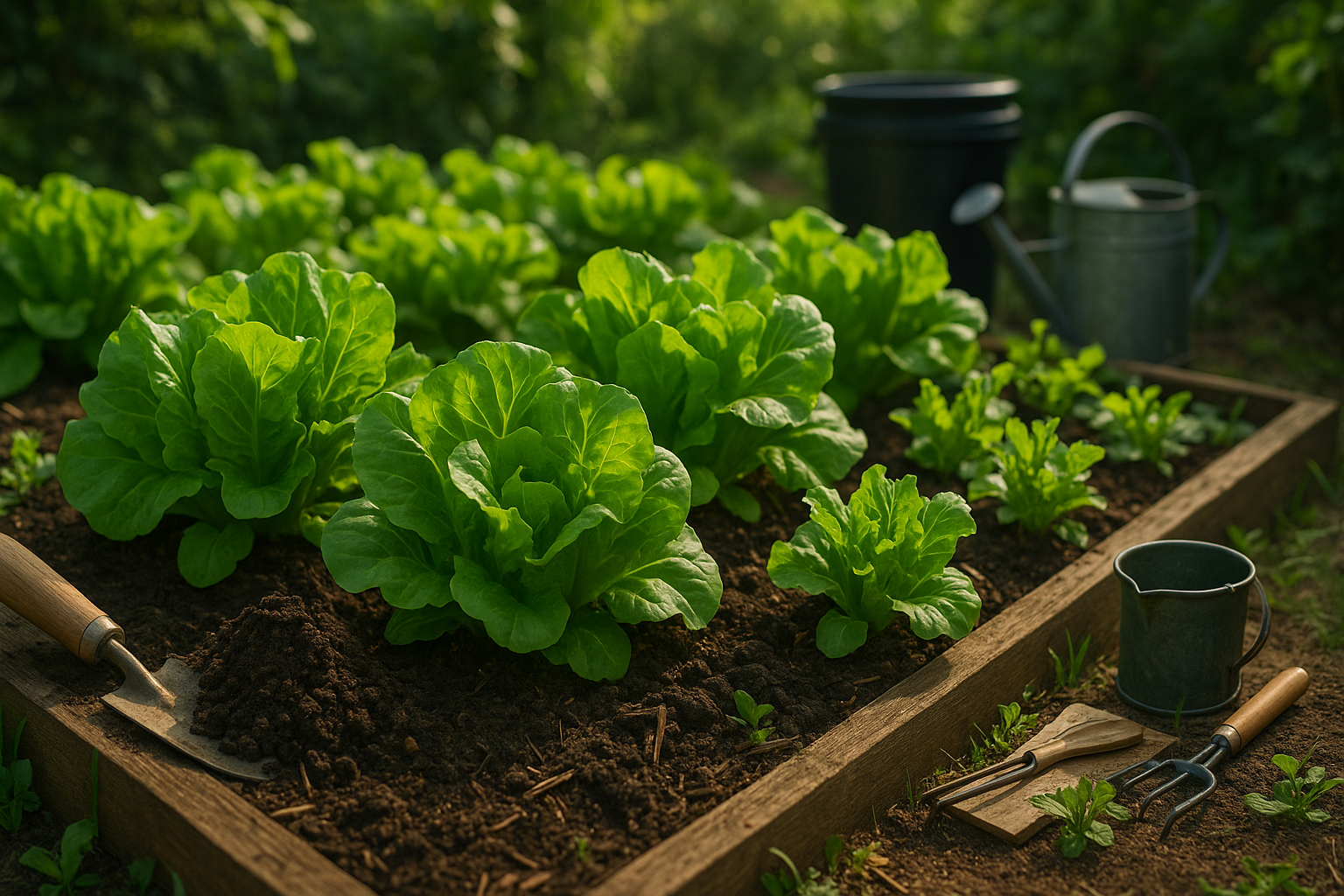Introduction
If you’re aiming to improve lettuce root growth in your garden or on your farm, understanding soil structure is the key to success. Lettuce, with its shallow and delicate root system, relies heavily on the condition of the soil it grows in. A well-structured soil can make all the difference—not only does it affect how roots expand and access nutrients, but it also directly influences the overall health and yield of your lettuce crop.
Think about it: compacted or poorly drained soil can stifle roots, causing weak plants and disappointing harvests, while loose, nutrient-rich earth encourages robust development and vibrant leaves.
Throughout this post, you’ll discover how factors like aeration, drainage, and organic matter impact the way lettuce roots grow. We’ll break down practical steps you can take to assess and improve your soil structure, share tips from experienced growers, and highlight real examples of how small changes can lead to big results.
Whether you’re troubleshooting stunted growth or planning your best lettuce patch yet, you’ll find actionable advice to help ensure your lettuce roots are thriving from the ground up.
Understanding Soil Structure

Soil structure refers to how individual soil particles—sand, silt, and clay—are grouped together into larger units called aggregates, creating spaces, or pores, in the soil. These pores are essential for the movement of air, water, and roots.
There are several main types of soil structure, each affecting plant growth differently:
- Granular structure: Often found in garden soils, it consists of small, crumb-like aggregates and is ideal for good drainage and root development.
- Blocky structure: Forms irregular, block-shaped chunks that can restrict water movement but offer stability.
- Platy structure: Appears as thin, flat layers stacked on top of each other, which can impede root penetration and water flow.
For lettuce, which has shallow, delicate root systems and fine root hairs, soil structure is especially critical. Lettuce thrives best in soils with a granular structure, as this evenly distributed pore space allows roots to access moisture and oxygen efficiently.
Compacted or poorly structured soils can crush or suffocate lettuce roots, leading to stunted growth or disease. To optimize the soil for lettuce, gardeners should aim to maintain a loose, crumbly texture by minimizing compaction, adding organic matter, and gently cultivating the surface to protect the fragile root zone.
How Soil Structure Impacts Lettuce Root Growth

Good soil structure is vital for healthy lettuce root growth, with water retention, aeration, and root penetration all playing key roles. In loose, well-aggregated soils—think crumbly soil that breaks apart easily in your hand—water and air move freely between soil particles. This allows lettuce roots to penetrate deeply and expand, drawing up moisture and nutrients efficiently.
Roots grown in these conditions are usually long, white, and branch out extensively, supporting lush, vibrant leaves above ground. By contrast, poor soil structure is often found in compacted or clay-heavy soils, where particles are pressed tightly together. This restricts both water and airflow—making for boggy, waterlogged areas when wet or hard, cracked surfaces when dry.
In these dense soils, lettuce roots struggle to penetrate, often appearing stunted or even deformed. You may notice lettuce plants with pale, wilted, or slow-growing leaves, especially after watering or rain, because the roots can’t access enough air or nutrients. Uneven or spotty growth across a lettuce bed can also signal compaction issues.
Testing Your Soil at Home
Try the “squeeze test”: a good soil structure will form a loose ball when moistened and squeezed but will crumble apart easily.
Improving Poor Soil Structure

Improving poor soil structure often starts with adding organic matter like compost and avoiding walking on wet garden beds, which can further compact the soil. Making these changes will encourage healthier, deeper lettuce roots—leading to stronger, more productive plants in your garden.
Optimizing Soil Structure for Healthy Lettuce Roots
Healthy lettuce starts with loose, well-structured soil that encourages strong root development and proper water movement. One of the easiest ways to improve soil structure is by mixing in plenty of organic matter—such as compost, aged manure, or worm castings—before planting. These materials boost soil nutrients and introduce beneficial microbes that help break down nutrients for lettuce roots.
Be sure to avoid walking on your growing beds, especially when the soil is wet, to prevent compaction that can restrict root growth and drainage. For extra support, rotate seasonal plantings with cover crops like clover or vetch, which naturally enrich the soil and protect it from erosion.
If your soil is heavy clay or too sandy, consider adding amendments like perlite to improve drainage or coconut coir to enhance moisture retention. After planting, apply a thin mulch layer such as straw or shredded leaves to keep the soil moist, suppress weeds, and protect the delicate lettuce roots.
For container gardens or raised beds, use a high-quality potting mix combined with compost, and make sure the container drains well to avoid soggy roots. Regularly fluff or gently aerate the soil surface between plantings to keep roots happy and oxygenated. By focusing on soil structure, your lettuce crop will be more resilient and productive.
Common Soil Problems and How to Fix Them
Lettuce growers often face common soil structure problems, including compaction, poor drainage, and crusting—issues that can stunt growth and lower yields.
Compaction
Compacted soil occurs when soil particles are pressed tightly together, making it hard for roots to grow and water to penetrate. You can check for compaction by pushing a screwdriver into moist soil; if it’s difficult, your soil may be compacted. To fix this, consider gentle tilling, aerating with a garden fork, or adding organic matter like compost.
Poor Drainage
Poor drainage is another common problem, often visible as standing water or soggy soil after rain. To improve drainage, create raised beds or mix sand and organic amendments into the soil. Regularly monitor your garden after watering to see how quickly the water disappears.
Soil Crusting
Soil crusting happens when the top layer hardens and cracks, preventing seeds from emerging and restricting gas exchange. Mulching lightly with straw or fine bark or gently breaking up the surface with a hand rake helps prevent crusting.
Additional Tips
Using a soil test kit to check for pH imbalances and nutrient deficiencies is a smart move, allowing you to address underlying issues with amendments. Regular visual inspections and adopting these quick fixes will keep your lettuce beds healthy and productive.
Additional Tips for Thriving Lettuce Root Systems
To help your lettuce develop strong, thriving root systems, consider watering deeply and consistently to encourage roots to grow downward rather than staying near the surface. Use a gentle spray or drip irrigation to keep the soil evenly moist without waterlogging.
Proper spacing—usually 8 to 12 inches apart, depending on the variety—allows each plant enough room to develop robust roots without competition. Rotate your lettuce crops each season to prevent soil-borne diseases and nutrient depletion. Try following lettuce with nitrogen-fixing crops like beans or peas for an added boost.
Select lettuce varieties that match your soil type. Aerated, well-draining mixes suit most leaf lettuces, while compact romaine types benefit from soil enriched with compost. Make it a routine to check your soil’s moisture and structure, adding organic matter or adjusting pH as needed.
These thoughtful strategies support healthier roots, resulting in lush, productive lettuce all season long.
Conclusion
A healthy soil structure is key to strong lettuce roots and high yields, as it allows for proper water movement, root growth, and nutrient absorption. By paying attention to soil texture and trying simple strategies like adding compost or gently loosening compacted soils, you can boost your harvests and grow healthier plants.
Don’t hesitate to experiment with different soil amendments and observe how your lettuce responds. For deeper knowledge, check out resources from your local extension office or trusted gardening books like Teaming with Microbes. Small changes can make a big difference in your garden’s success!
